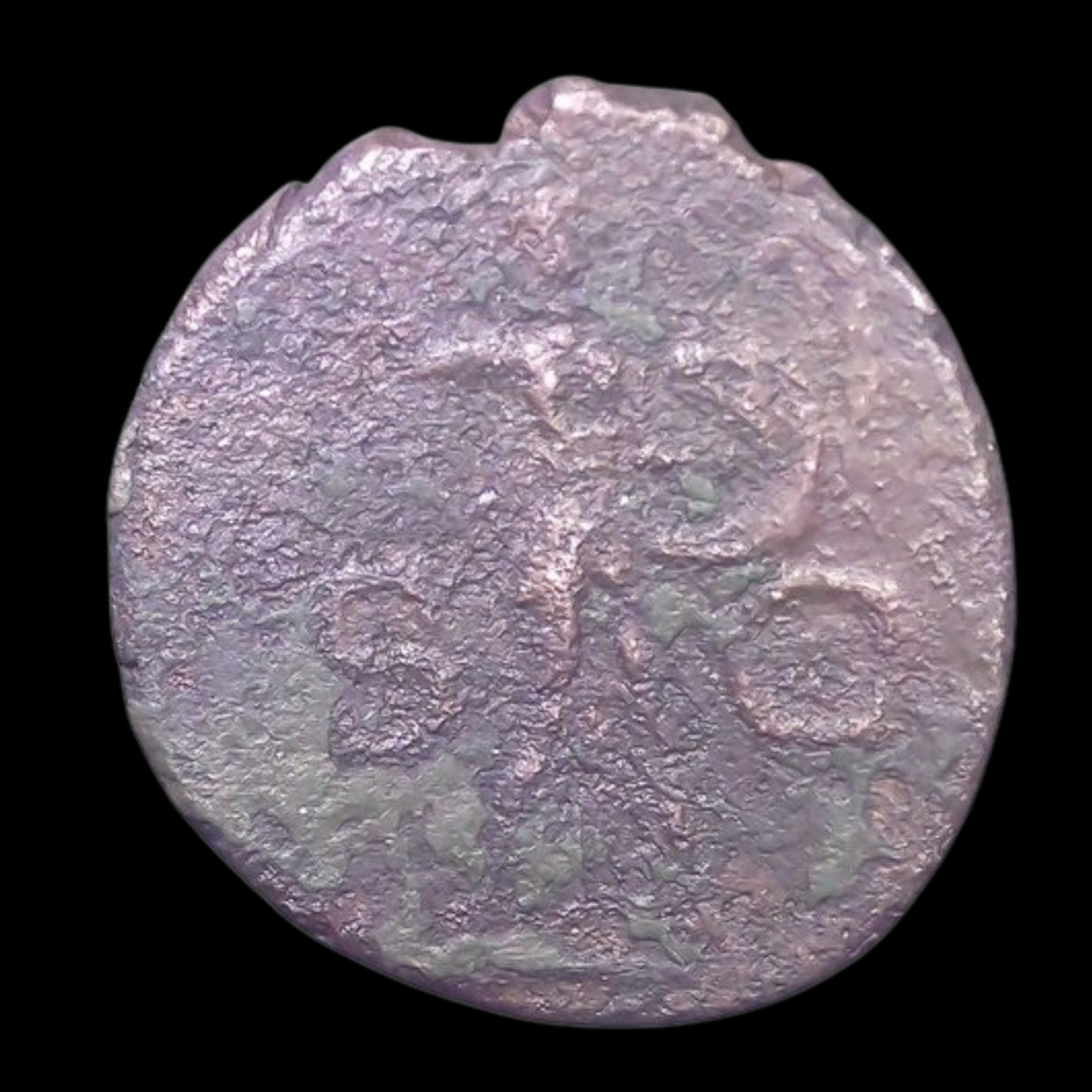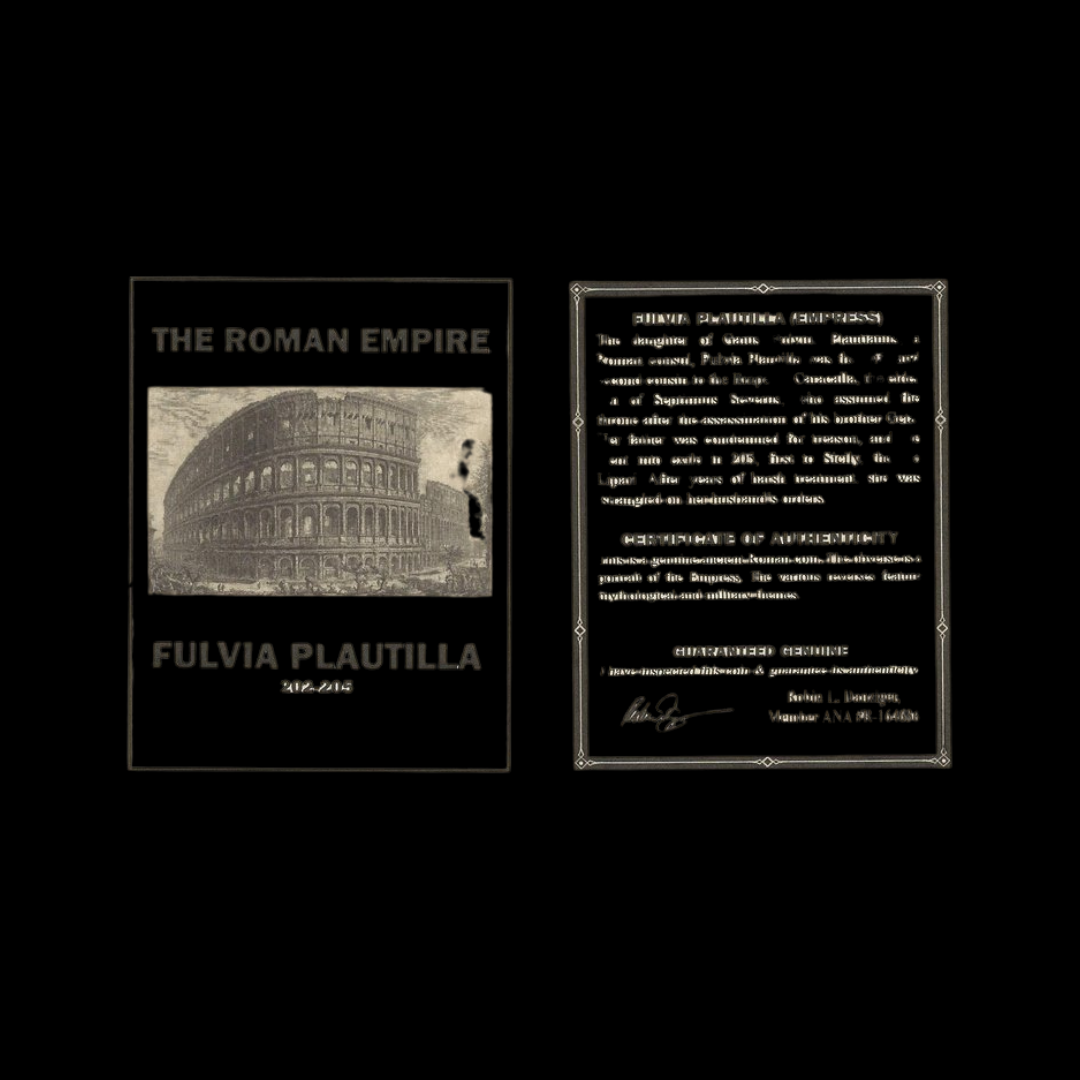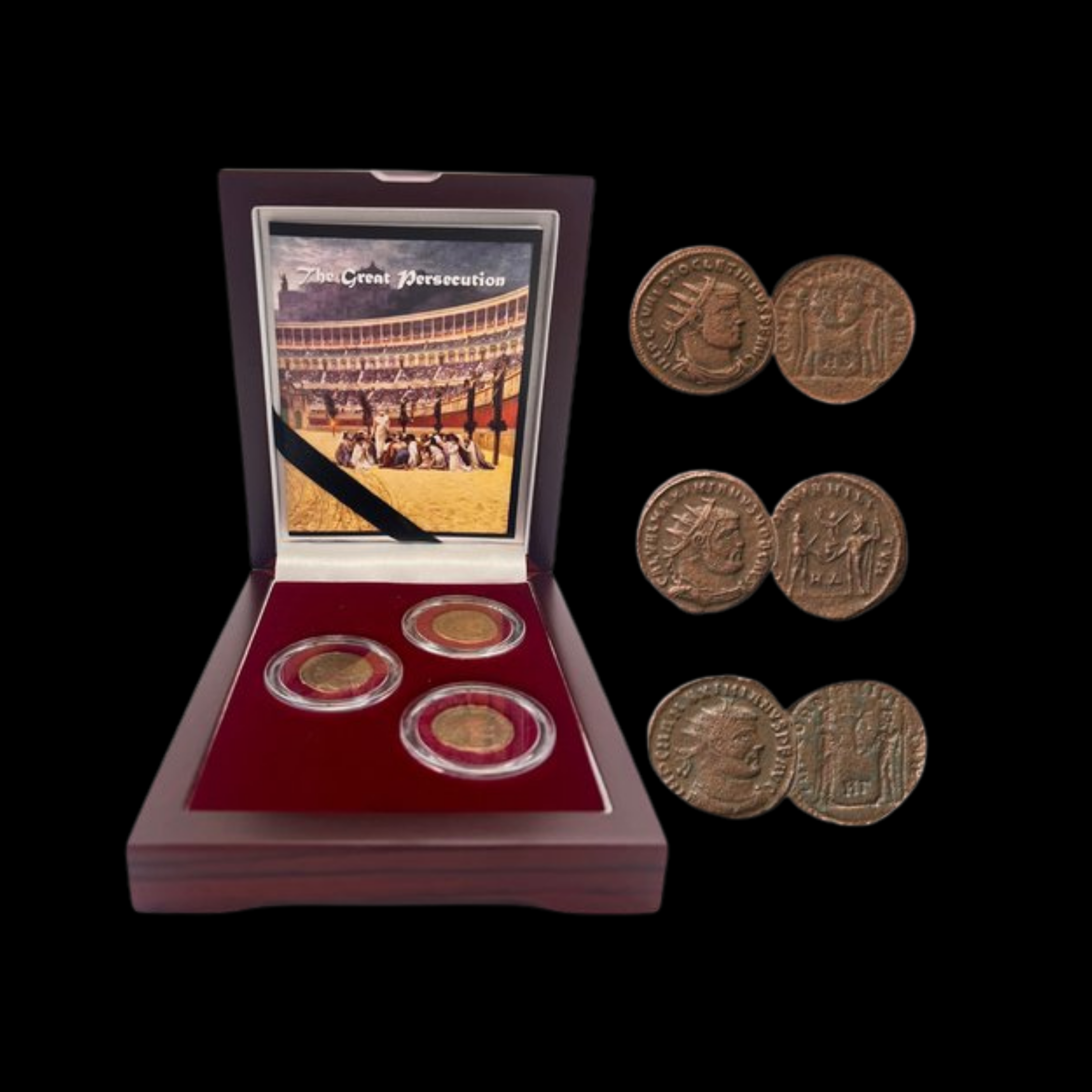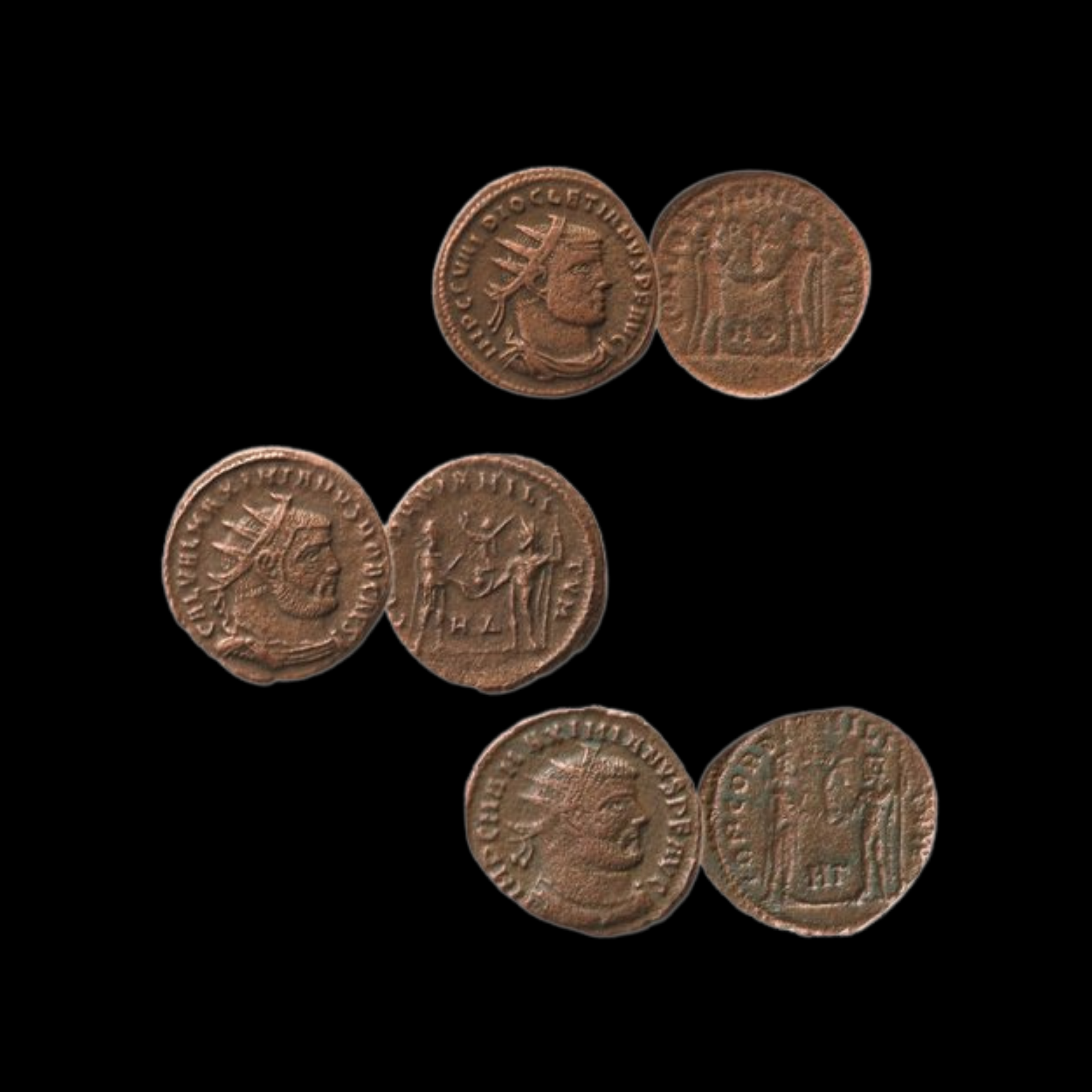 Image 1 of 7
Image 1 of 7

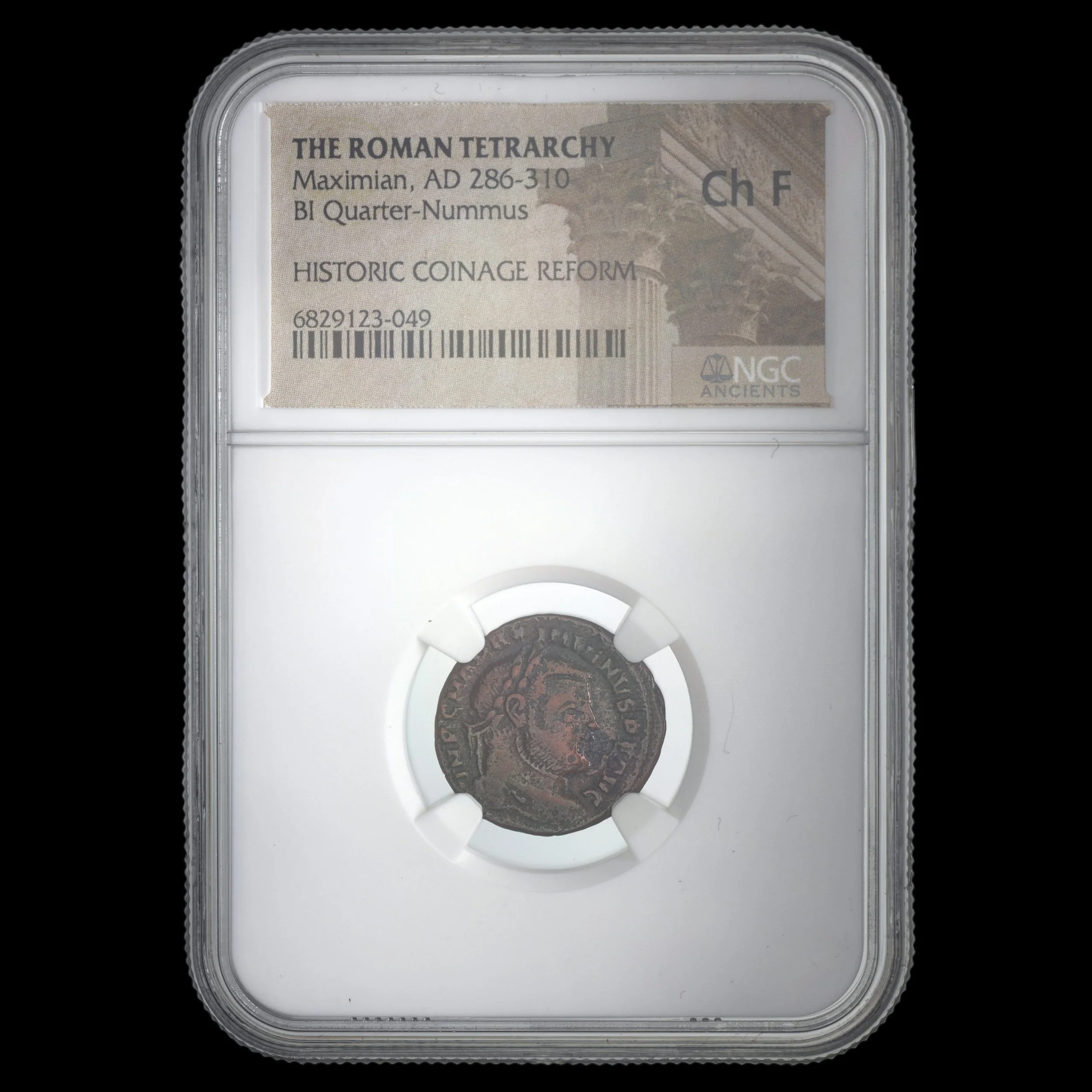 Image 2 of 7
Image 2 of 7

 Image 3 of 7
Image 3 of 7

 Image 4 of 7
Image 4 of 7

 Image 5 of 7
Image 5 of 7

 Image 6 of 7
Image 6 of 7

 Image 7 of 7
Image 7 of 7








Bronze Coin of Maximian (about 1730-1740 years ago)
The coins shown are representative examples of the grade and type, but not the actual specimens for sale. For details on NGC’s grading standards and definitions, please refer to our NGC Grading page.
This bronze coin was issued under the authority of Emperor Maximian, who ruled as part of Rome's first Tetrarchy system. Minted in the late 3rd century CE, this coin circulated during a period of significant imperial reforms designed to stabilize the empire after decades of civil wars and economic crises.
Coin Description:
Front side: Portrait of Emperor Maximian with a radiate crown (crown with sun rays), shown with a stern expression and military clothing, with Latin text identifying him as emperor
Back side: Likely depicts either a Roman deity (possibly Jupiter or Hercules, whom Maximian associated himself with) or personification of an imperial virtue like Victory or Peace
Technical Details:
Bronze alloy composition
Antoninianus denomination (originally silver-washed but often worn to reveal bronze underneath)
RIC (Roman Imperial Coinage) reference number not visible in description
NGC (Numismatic Guaranty Corporation) certified
Minted approximately 286-305 CE
Fine condition (significant wear consistent with circulation but main features remain identifiable)
Historical Significance:
This coin was issued during the reign of Maximian, who served as co-emperor in the western provinces alongside Diocletian in the east. Their Tetrarchy system (rule of four) was a novel political solution to governing the vast Roman Empire. As a tough military commander from humble origins in Pannonia (modern Hungary/Balkans region), Maximian helped restore stability to the western provinces after decades of military anarchy. These bronze coins circulated widely among common citizens and soldiers when the empire was implementing sweeping economic and administrative reforms, including Diocletian's price edict attempting to control inflation and standardize costs throughout the empire.
The coins shown are representative examples of the grade and type, but not the actual specimens for sale. For details on NGC’s grading standards and definitions, please refer to our NGC Grading page.
This bronze coin was issued under the authority of Emperor Maximian, who ruled as part of Rome's first Tetrarchy system. Minted in the late 3rd century CE, this coin circulated during a period of significant imperial reforms designed to stabilize the empire after decades of civil wars and economic crises.
Coin Description:
Front side: Portrait of Emperor Maximian with a radiate crown (crown with sun rays), shown with a stern expression and military clothing, with Latin text identifying him as emperor
Back side: Likely depicts either a Roman deity (possibly Jupiter or Hercules, whom Maximian associated himself with) or personification of an imperial virtue like Victory or Peace
Technical Details:
Bronze alloy composition
Antoninianus denomination (originally silver-washed but often worn to reveal bronze underneath)
RIC (Roman Imperial Coinage) reference number not visible in description
NGC (Numismatic Guaranty Corporation) certified
Minted approximately 286-305 CE
Fine condition (significant wear consistent with circulation but main features remain identifiable)
Historical Significance:
This coin was issued during the reign of Maximian, who served as co-emperor in the western provinces alongside Diocletian in the east. Their Tetrarchy system (rule of four) was a novel political solution to governing the vast Roman Empire. As a tough military commander from humble origins in Pannonia (modern Hungary/Balkans region), Maximian helped restore stability to the western provinces after decades of military anarchy. These bronze coins circulated widely among common citizens and soldiers when the empire was implementing sweeping economic and administrative reforms, including Diocletian's price edict attempting to control inflation and standardize costs throughout the empire.



